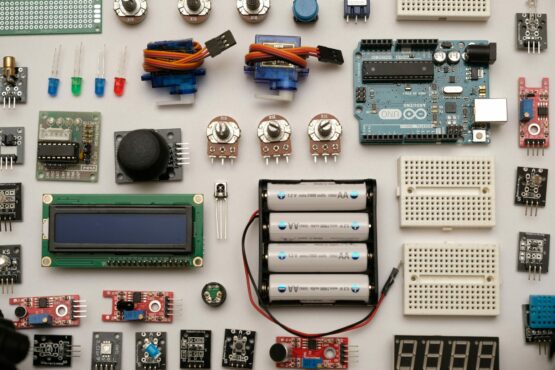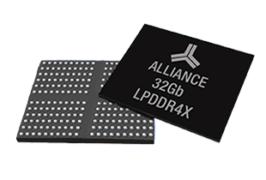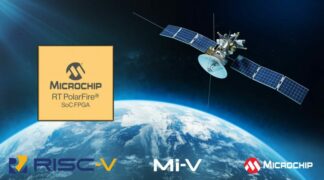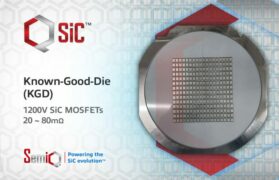Technology distributors play a leading role in the current market scenario for electronic components and sub-systems, and act as a real hinge between producers and suppliers, proposing the most suitable solutions to meet specific requirements, and intervening in each phase of the product lifecycle.
by Andrea Cattania
The challenges facing the designers of systems and components for electric cars, and those intended for installation aboard the vehicle, present various difficulties. In the case that we will look at here, the main design requirement was the need to minimise the weight and size of a battery charger, even when exposed to high power levels, as well as the need to reduce installation times and costs. This condition required looking beyond the use of standard components, which would have involved threaded or welded connections.
The project described here represents a perfect instance of enhancing the role of the technology distributor, which operated not only as a hinge between the design company and the supplier of specific components, but also as an active participant in the product approval phase.
The Meta System solution
This onboard battery charger was produced by Meta System, a company specialising in advanced electronic systems for the automotive sector. Established in Reggio Emilia in 1973, Meta System focuses on innovation, know-how differentiation and continuous technological progress. The company has more than 150 registered patents to its name and employs approximately three hundred employees in research and development activities, collaborating with the major car manufacturers worldwide.
In this case, the challenge for the designers comprised the size of the battery charger to be installed on the vehicle. Minimising this footprint was a strict design requirement, which eliminated any possibility of using standard connectors. One particularly important decision was therefore the selection of the supplier who best met this requirement.
The winning approach proved to be to collaborate with a technology distributor capable of combining technical and market expertise with wide-ranging knowledge of the world of manufacturers, an essential criterion for making the desired choice within a short period of time. Arrow Electronics is a leading global technology provider with a strong international presence in the automotive sector’s supply chain. Against a background of an increasing trend toward a model in which electrification, digitalisation and autonomous driving foreshadow the future of the automotive industry, Arrow operates as a reliable reference point capable of anticipating future requirements and of guiding customers through the complexity of rapidly evolving scenarios such as in the automotive sector. Arrow’s unique ecosystem of manufacturers, developers and technologies offers the right conditions for creating complete, independent, and integrated technical solutions for the automotive sector.
As a Meta System technology distributor, Arrow Electronics realised from the very start that the stringent design constraints would require careful planning, not only of the electronics, but also of the mechanics and connections. Right from the start of the project, Arrow’s specialists got in touch with the main suppliers of these components to ensure a careful assessment of their alignment with the needs of the design. Following a careful examination of the main manufacturers active in the market, the decision was made in favour of Amphenol.
The main function of the On-board Battery Charger product is to convert the AC mains voltage into a DC voltage, which is then used to charge a high-voltage accumulator (in this instance, the vehicle’s battery system). Designed for on-board installation, the unit can be used as a standalone charger or in combination with other units in parallel to reduce the charging time. A further reduction in charging time was achieved thanks to its high operating efficiency.
The converter can be connected to almost any kind of electrical network, as it is compliant with current standards in Europe, Asia, and the USA. It uses power line communication (PLC) to exchange information with the charging station as well as for the various functions for managing the charging process (Proxy, Pilot, LED control, plug locking, etc.). The topology of the product, which operates at high frequencies and uses silicon carbide MOSFETs, was carefully developed with a view to minimising cost, weight, and volume. These features, in combination with the reduction in assembly times and the increase in current capacity, were also taken into consideration in the various power connections that have been developed (single or multiple contacts, wire-to-board, board-to-board).
Meta System activity in the automotive sector
The success of projects and products like the one mentioned here is the result of the perfect teamwork between the main players, who are aligned along the same strategic vision focused on innovation, the driving force behind the activities of the companies involved.
In Meta System, the fundamental factors in research and development are the high level of specialisation of the technicians, an excellent ERP system and the use of the latest technologies.
The use of electric propulsion is based on the technical characteristics defined for e-mobility. These technologies relate to hybrid, plug-in and fully electric vehicles, which are intended to reduce emissions levels, operating costs and fuel consumption. In the e-mobility market, Meta System offers global OEM manufacturers professional support, not only in terms of state-of-the-art products, but also in terms of hi-tech methodologies and advanced technologies.
E-mobility is Meta System’s flagship sector. Forecast turnover for 2020, updated based on the impact of the ongoing pandemic, is expected to reach approximately €194 million, of which €110M comes from this sector. The forecast shows constant growth over the coming years, reaching more than €500M in 2026. Meta System has completed projects for major global manufacturers in the sector.
In addition to “innovation”, the key word for Meta System in this area is “safety”. Safety and security products, such as the Park Assist parking assistance sensor range, Clima Fan Control climate control system electronic control module range, smart sirens and volumetric protection systems, can be adapted to the most complex automotive systems to create bespoke solutions.
One of Meta System’s objectives is to make mobility safer and smarter for everyone, and the Telematics business unit, established in 2002, has since developed products, services and solutions for usage based insurance (UBI) and for the management of corporate fleets in line with automotive sector standards. Meta System is a market leader in telematics solutions for insurance companies, with more than ten million devices on the road.
Design that looks to the future
Meta System designers operate based on structured analyses of requirements throughout a design cycle which covers the various phases from design through to the implementation, installation and integration of the devices. The Meta System project team has recently been expanded with a simulation group, which makes its skills available for the development of advanced, sustainable solutions.
This integrated design activity is not limited to electronics alone, but extends to mechanics, with the ability to create complex structures to a high standard for integration into the target systems. The Simulation division creates and analyses digital prototypes of physical models, identifying their weaknesses to eliminate these from the start. The aim is to ensure the maximum efficiency of designs and products, which are intended to anticipate the future, thanks to their innovative features.
These simulations and analyses include the real-time assessment of design changes, structural checks of the mechanical parts, the fluid-dynamic optimisation of cooling circuits, predictions of the system’s thermal performance, electromagnetic compatibility checks, the optimisation of the magnetic circuits of power components and EMI filters, and the development and validation of RF antennae.
The transition from design to large-scale production involves the use of the latest automation processes. Product reliability is guaranteed by an internal ISO 17025-certified laboratory, which complies with the automotive standard requirements for the approval and qualification of products. In the Life Testing division, devices undergo rigorous thermal, mechanical, and environmental reliability tests, as part of which the behaviour of the products is examined across a wide range of conditions. A further factor which guarantees Meta System’s market competitiveness is the presence of SMT assembly lines in clean room environments, which comply with Industry 4.0 requirements for process automation and quality. This picture is completed with smart logistics, which allow the effective management of materials using an ERP system that is connected 24 hours a day for complete traceability.
The entire process is governed by a certified quality system.
The added value of a technology distributor
This project is significant in a wide variety of aspects. First, because it involves a product which started out as a custom item but is destined to become a standard component, as it meets a general need. In this instance, the case is interesting as an example of a situation where the starting constraint is its footprint, since the dimensions of the final product also affect the design of the electronics.
More importantly, however, the case also highlights the added value represented by a technology distributor that understands the needs of the manufacturer, relieving them of other tasks which might distract them from focusing on the product, and who collaborates in the setup of the project, coordinating its various phases.
Arrow’s commitment is not limited to the role that it plays during the design phase. Product approval also requires intensive involvement, due to the strict protocols governing the automotive sector. The strategic positioning of a technology distributor allows them to rapidly establish the necessary contacts, which often represent a not-inconsiderable problem for a medium-sized company.
The development and implementation of this project, which translated into a successful product for a major automotive manufacturer, constituted a notable feather in the cap for Meta System and Arrow Electronics in view of the intensification of relationships with players in the sector and the improvement in their own positioning on the market.










